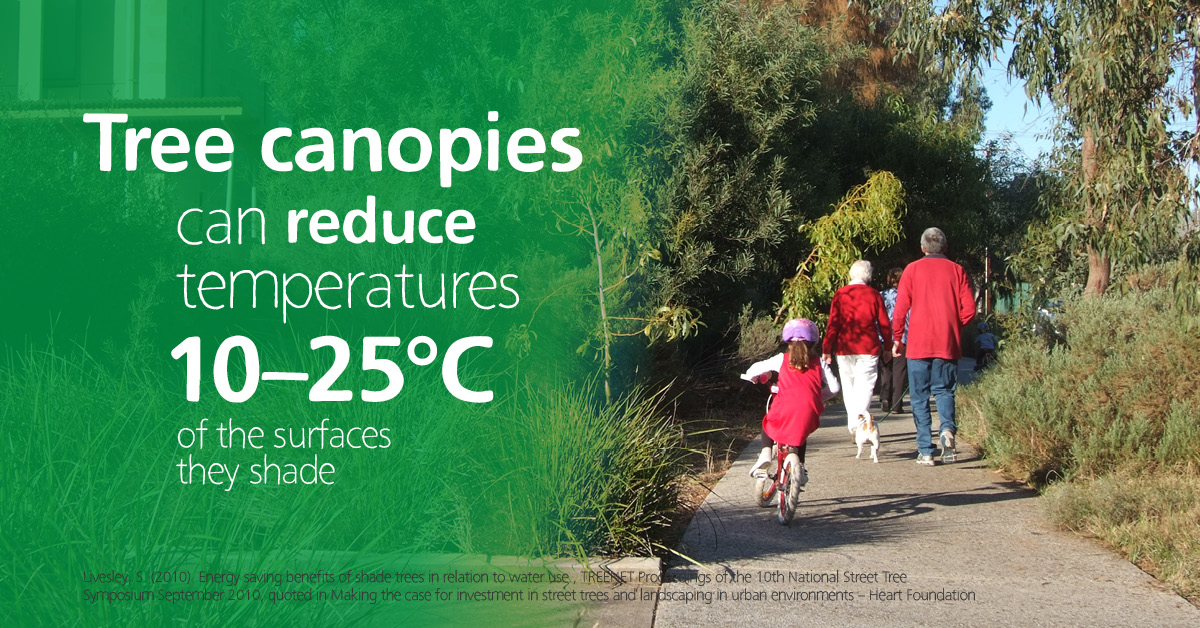Campbelltown Urban Forest
Campbelltown's Urban Forest comprises all trees on our streets, parks, reserves and even people's backyards from the River Torrens through to the foothills.
In December 2022 Council endorsed its first Urban Forest Strategy, which sets out our plan for growing, managing, protecting, sustaining and engaging our urban forest.
Grow our canopy
To grow our canopy, we have a target in-line with the State Government’s 30 Year Plan to reach 29% canopy cover by 2045 (which is a 20% increase from 2018 levels of 24%).
We have increased our street tree plantings to 1,200 each year, and through community planting days and our regular horticulture and biodiversity program we plant thousands of trees and shrubs in parks and reserves.
View the interactive Campbelltown Urban Forest Map to see the species in your area.
Or you can visit the greener spaces better places website to see how Campbelltown Council compared in a recent snapshot across the country. This is indicative only and Council is participating in more local analysis to track and monitor canopy cover throughout the Council area. You can see the LiDAR canopy cover data on the Department of Environment website.
An urban forest is a forest or a collection of trees that grow within a city, town or a suburb. They provide numerous benefits to the community including shade, cooling, clean air, reduced stormwater runoff and habitat for birds and wildlife just to name a few. Like any living thing, they need enough water to grow strong and healthy and this can be a challenge in an urban setting where there are lots of surfaces that don't allow water to soak into the ground.
For more information on the benefits of trees download the Benefits of Trees postcard developed by the Campbelltown Friends of the Environment Group.
More recent challenges to the maintenance of our urban forest include the increase in infill development, decrease in annual rainfall, increase in extreme heat events, the impacts they all have on our trees and how we manage this info the future.
Campbelltown Council has begun working on these issues including assessing current canopy cover (a way to quantify the level of cover in an urban setting), as well as a range of other programs and operational reviews to address the challenges presented to maintaining our urban forest into the future.
Download a copy of Council's Canopy Cover Report for a detailed look into the trend in canopy cover over time. In 2013 Council canopy coverage comprised 19% of total area.
The State Government has set a Target of increasing canopy cover from 2013 levels by 2045 and Council is working on possible strategies for increases on public land to help to address the existing downward trend. This is also supported by Council's involvement in Resilient East Project - A Regional Climate Adaptation Project involving seven Eastern Councils and Adelaide City Council.
Council is also investing in a number of Water Sensitive Urban Design Projects (WSUD) aimed at using stormwater in the local environment to naturally water trees instead of heading straight into the stormwater drain. For more details check out the Water Sensitive Urban Design page.

